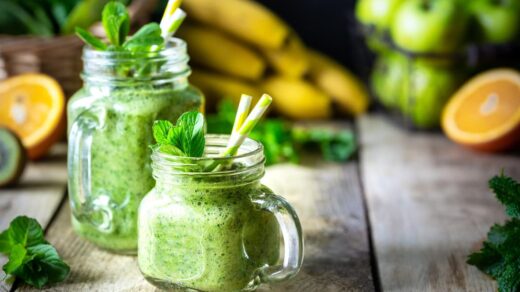Hey there, fellow busy parent! Let me share something that’s completely transformed our family mealtimes.
It’s called “momfood importantcool,” and it’s all about creating delicious, nutritious meals without spending hours in the kitchen.
As a mom of three who juggles work, school activities, and everything in between, I understand the daily dinner struggle all too well.
Remember those nights when you’re staring into the fridge at 6 PM, wondering what to cook? We’ve all been there! That’s exactly why I developed these smart cooking strategies that have become our family’s secret weapon for stress-free dinners.
The beauty of momfood importantcool isn’t just about quick cooking – it’s about creating meaningful connections through food.
I’ve discovered that when we approach cooking with the right tools and attitude, it becomes less of a chore and more of an adventure.
Whether you’re dealing with picky eaters, tight schedules, or dietary restrictions, these techniques will help you put wholesome meals on the table that everyone will love. Plus, you’ll be teaching your kids valuable life skills along the way!
Momfood Importantcool

In this comprehensive guide, I’ll walk you through everything from essential kitchen equipment to foolproof recipes.
We’ll explore how to get kids involved safely, adapt meals for different dietary needs, and make the whole process enjoyable.
The best part? These aren’t complicated chef techniques – they’re real-world solutions that work for real families like yours and mine.
Essential Kitchen Tools for Quick Dinners
Let’s start with the foundation of efficient cooking – having the right tools in your kitchen. Think of these as your trusty sidekicks that make cooking faster, easier, and more enjoyable.
Multi-cookers and Instant Pots
These magical devices have revolutionized how busy families cook. Here’s why they’re worth every penny:
Advanced Features of the Instant Pot Pro:
- Smart Programs for different cooking methods:
- Pressure cooking
- Slow cooking
- Rice cooking
- Steaming
- Sautéing
- Yogurt making
- Sous vide cooking
- Safety Features:
- Auto-locking lid
- Steam release button placement
- Overheat protection
- Safety lock mechanisms
- Automatic pressure control
- Time-Saving Benefits:
- Reduces cooking time by up to 70%
- Multiple dishes in one pot
- Programmable delayed start
- Keep warm function
- Easy clean-up
Instant Pot RIO Benefits for Beginners:
- Simple Interface:
- Clear, easy-to-read display
- Basic function buttons
- Preset cooking programs
- Starter-Friendly Features:
- Built-in recipe book
- Basic safety features
- Compact size for small kitchens
Food Processors
A quality food processor can save you hours of prep time. Here’s what you need to know:
Size Guide and Uses:
| Processor Size | Best For | Family Size | Storage Needs |
|---|---|---|---|
| 14-cup | Large batches, meal prep | 4+ people | Large storage space |
| 10-cup | Regular family meals | 2-4 people | Medium storage space |
| 7-cup | Small batches, basic prep | 1-2 people | Small storage space |
| Mini (3-4 cup) | Quick jobs, sauces | Any | Minimal storage |
Essential Food Processor Tasks:
- Vegetable Prep:
- Shredding carrots for salads
- Slicing cucumbers uniformly
- Chopping onions tear-free
- Making cauliflower rice
- Sauce and Dip Making:
- Homemade hummus
- Fresh pesto
- Salad dressings
- Nut butters
- Baking Assistance:
- Crushing graham crackers
- Making pie crust
- Mixing cookie dough
- Grinding nuts
Quality Knives and Cutting Boards
Your most basic yet essential tools deserve special attention:
Essential Knife Collection:
- Chef’s Knife (8-inch):
- All-purpose cutting
- Chopping vegetables
- Slicing meat
- Mincing herbs
- Paring Knife (3-4 inch):
- Peeling fruits
- Detailed cutting
- Remove seeds
- Small precise tasks
- Serrated Knife:
- Slicing bread
- Cutting tomatoes
- Slicing soft fruits
- Cake leveling
Cutting Board Selection Guide:
| Material | Pros | Cons | Best Uses |
|---|---|---|---|
| Wood | Gentle on knives, natural antibacterial | Needs maintenance | Vegetables, fruits |
| Bamboo | Sustainable, lightweight | Can be hard on knives | General purpose |
| Plastic | Dishwasher safe, affordable | Shows wear quickly | Raw meat, fish |
| Glass | Very hygienic, heat-resistant | Hard on knives | Serving only |
5 Go-To Momfood Importantcool Recipes
Let’s dive into some family-tested recipes that consistently deliver great results!
15-minute Stir-fry
This versatile dish is a lifesaver on busy nights. Here’s how to make it perfect every time:
Base Recipe Components:
- Protein: 1 pound, cut into bite-sized pieces Vegetables: 4 cups, mixed Noodles: 8 ounces Sauce: 1/2 cup Aromatics: 2-3 tablespoons
Quick Stir-fry Sauce Recipe:
- 1/4 cup soy sauce
- 1/4 cup chicken broth
- 2 tablespoons honey
- 1 tablespoon grated ginger
- 2 cloves minced garlic
- 1 teaspoon cornstarch
Cooking Method:
- Prep all ingredients before starting
- Cook protein first, remove from pan
- Stir-fry vegetables in batches
- Combine everything with sauce
- Add pre-cooked noodles
- Toss until heated through
Customizable Grain Bowls
These versatile bowls are perfect for meal prep and pleasing different tastes.
Complete Bowl Building Guide:
| Component | Options | Portion Size | Prep Method |
|---|---|---|---|
| Grains | Quinoa, rice, farro | 1 cup cooked | Batch cook weekly |
| Protein | Chicken, tofu, beans | 4-6 oz | Season well |
| Vegetables | Raw, roasted, steamed | 2 cups | Vary colors |
| Healthy Fats | Avocado, nuts, seeds | 2-3 tbsp | Add last |
| Sauce/Dressing | Tahini, vinaigrette | 2-3 tbsp | Store separately |
Popular Grain Bowl Combinations:
- Mediterranean Bowl:
- Quinoa base
- Chickpeas
- Cucumber and tomatoes
- Feta cheese
- Lemon-herb dressing
- Asian-Inspired Bowl:
- Brown rice base
- Teriyaki Chicken
- Edamame and carrots
- Sesame seeds
- Ginger-soy dressing
- Mexican Bowl:
- Cilantro-lime rice
- Black beans
- Corn and peppers
- Avocado
- Chipotle-lime dressing
Veggie-packed Pasta Dishes
Transform ordinary pasta into nutrient-rich meals that kids want to eat!
Master Pasta Formula:
| Component | Amount | Options | Tips |
|---|---|---|---|
| Pasta | 1 pound | Regular, whole wheat, gluten-free | Cook al dente |
| Vegetables | 4-6 cups | Fresh, frozen, roasted | Cut uniform size |
| Protein | 1-2 cups | Meat, beans, cheese | Pre-cook if needed |
| Sauce | 2-3 cups | Tomato, cream, olive oil | Make extra |
| Herbs/Seasonings | To taste | Fresh or dried | Add at end |
Quick Veggie Pasta Recipes:
Classic Primavera:
- Ingredients:
- Penne pasta
- Zucchini, carrots, peppers
- Cherry tomatoes
- Fresh basil
- Parmesan cheese
- Garlic-olive oil sauce
Creamy Butternut:
- Key Components:
- Whole wheat fusilli
- Roasted butternut squash
- Spinach
- Sage
- Ricotta cheese
- Brown butter sauce
Involving Kids in Meal Preparation
Making cooking a family activity creates lasting memories and teaches valuable life skills.
Age-appropriate Tasks
Detailed Task Guide by Age:
Ages 2-3:
- Washing fruits and vegetables
- Tearing lettuce leaves
- Sprinkling cheese
- Stirring dry ingredients
- Using cookie cutters
Ages 4-5:
- Measuring dry ingredients
- Cracking eggs
- Mashing potatoes
- Kneading dough
- Setting the table
Ages 6-8:
- Reading simple recipes
- Using a hand mixer
- Grating cheese
- Making sandwiches
- Basic knife skills with supervision
Ages 9-12:
- Following complete recipes
- Using the microwave
- Making breakfast
- Basic stovetop cooking
- Using small appliances
Teenagers:
- Meal planning
- Grocery shopping
- Advanced knife skills
- Complete meal preparation
- Kitchen organization
Teaching Kitchen Safety
Comprehensive Safety Guidelines:
Personal Safety:
- Proper hand washing technique
- Appropriate clothing
- Hair tied back
- No loose jewelry
- Non-slip shoes
Equipment Safety:
- Proper knife handling
- Oven mitt usage
- Electrical appliance care
- Hot surface awareness
- Clean as you go
Food Safety:
- Temperature danger zone
- Cross-contamination prevention
- Proper food storage
- Expiration date checking
- Leftovers handling
Encouraging Creativity
Ways to Make Cooking Fun and Educational:
Kitchen Projects:
- Start a family cookbook
- Create themed meals
- Invent new recipes
- Hold cooking competitions
- Make video tutorials
Learning Opportunities:
- Practice math by measuring
- Learn about food science
- Study world cultures
- Develop planning skills
- Build confidence
Adapting Recipes for Dietary Restrictions
Making inclusive meals that everyone can enjoy together.
Gluten-free Options
Comprehensive Substitution Guide:
Flour Alternatives:
- Rice flour
- Almond flour
- Coconut flour
- Tapioca flour
- Potato starch
Grain Alternatives:
- Quinoa
- Rice
- Millet
- Buckwheat
- Corn
Vegetarian and Vegan Alternatives
Complete Protein Sources:
Plant-based Proteins:
- Legumes:
- Black beans
- Chickpeas
- Lentils
- Split peas
- Edamame
- Nuts and Seeds:
- Almonds
- Chia seeds
- Hemp seeds
- Pumpkin seeds
- Walnuts
Meat Alternatives:
- Tofu
- Tempeh
- Seitan
- Textured vegetable protein
- Plant-based meat substitutes
Allergy-friendly Substitutions
Common Allergen Replacements:
| Allergen | Substitutes | Best Uses |
|---|---|---|
| Eggs | Flax eggs, applesauce, banana | Baking |
| Dairy | Plant milk, coconut cream | Drinking, cooking |
| Nuts | Seeds, beans | Snacking, protein |
| Soy | Coconut aminos, chickpeas | Seasoning, protein |
| Wheat | Alternative flours, vegetables | Baking, pasta |
FAQs:
- How do I start implementing momfood importantcool if I’m a complete beginner?
Start with one simple recipe and master it. Focus on basic techniques like chopping vegetables or cooking pasta properly. As you gain confidence, gradually add more recipes and techniques to your repertoire.
- What are the must-have ingredients for a momfood importantcool kitchen?
Stock your pantry with versatile basics like whole grains, pasta, canned beans, broths, and frozen vegetables. Keep common seasonings on hand and buy fresh produce weekly based on your meal plan.
- How can I make healthy meals when I have zero time?
Prep ingredients in advance, use a slow cooker or Instant Pot, and keep quick-cooking proteins like eggs and canned beans on hand. Don’t be afraid to use frozen vegetables and pre-cooked grains.
- What if my family has multiple dietary restrictions?
Focus on building meals with a common base that can be customized individually. For example, create a “bowl” station where family members can choose their own toppings and proteins.
- How do I get my picky eaters to try new foods?
Involve them in meal planning and preparation, start with small portions of new foods alongside familiar favorites, and be patient. Make food fun and never force them to eat something they truly dislike.
- Can I prep momfood importantcool meals in advance?
Absolutely! Many recipes can be prepped ahead or frozen. Spend some time on weekends preparing ingredients or complete meals for the week ahead. This makes weeknight dinners much more manageable.
- How do I scale recipes for different family sizes?
Most recipes can be easily doubled or halved. Pay attention to cooking times and pan sizes when scaling, and remember that some seasonings may not need to be exactly doubled or halved.
- What’s the best way to store leftover prepared meals?
Use airtight containers and store in the refrigerator for 3-4 days. Label everything with contents and dates. Many dishes can be frozen for up to 3 months. Let food cool completely before storing.
Also Check:
Conclusion:
The journey to mastering momfood importantcool is about more than just cooking – it’s about creating a sustainable, enjoyable approach to feeding your family.
By incorporating these tools, recipes, and techniques into your daily routine, you’ll discover that healthy family meals don’t have to be complicated or time-consuming.
Remember, the goal isn’t perfection; it’s about finding what works for your unique family situation and building on those successes.
Start small, perhaps with just one new recipe or kitchen tool, and gradually expand your repertoire as you gain confidence.
The most important ingredients are patience, creativity, and a willingness to try new things.
Before you know it, you’ll have transformed your family’s relationship with food and created countless precious memories around the dinner table.



